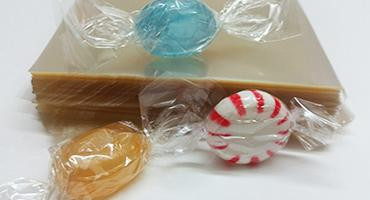Twist candy wrappers are another name for the candy. It is a sweet treat with sugar as its main component. Any sweet, such as sugar candy, chocolate, and chewing gum, is considered a sugar confection. When fruit or nuts are covered in sugar, it is said that they have been candied.
Hard candies, caramel, and marshmallows are examples of sugar-based confections. Based on the quantity of sugar they contain, sugar candies are categorized. A traditional Japanese sugar confection known as a competitor contains almost 100% sugar. A sugar candy with sugar, color, and flavour is a fruit-shaped hard candy. Haribo gummy bears are chewy gummy candies that are popular in Germany. Soft sugar candy with a lot of water is called jelly beans. The pattern is an extremely soft sugar candy from Finland; the colored ones have a fruity flavour, while the black ones have a salty one.

Candy was typically offered unwrapped before the turn of the century. However, the filth and germs that unwrapped candies can gather led to criticism of them later. As foil and Cellophane wrappers gained popularity over time, wax paper started to replace them as a preferred wrapping material.
Sugar is used to make candy by combining it with liquids like milk or water to create a syrup. The syrup is cooked for a very long time until it begins to solidify, then it is poured into molds. Sweets come in various textures, including soft, firm, and gel varieties. The ingredients and processing temperatures have a major impact on the texture of the sweets. The majority of the candies are made in factories. It is exceedingly challenging to reproduce the flavor and texture of the candy accurately. Large variances in the finished product can result from even little machinery, temperature, and timing variations.
Packaging prevents taste and fragrance loss. Cellophane is used in packaging because it is transparent, protects candy from grease and moisture, and can be resealed. In contrast, wax paper is useful for sealing it against air, moisture, dust, and bacteria. Bulk packaging uses bags made of polyethylene. Tapioca, potato, or wheat-based adhesive is used to seal packages. Packaging aids in product marketing because it is practical to print names on wraps. Advertising the name on wraps makes branding simple.
Source Url :- https://sites.google.com/view/caramelwraps0o01/home
Leave a comment